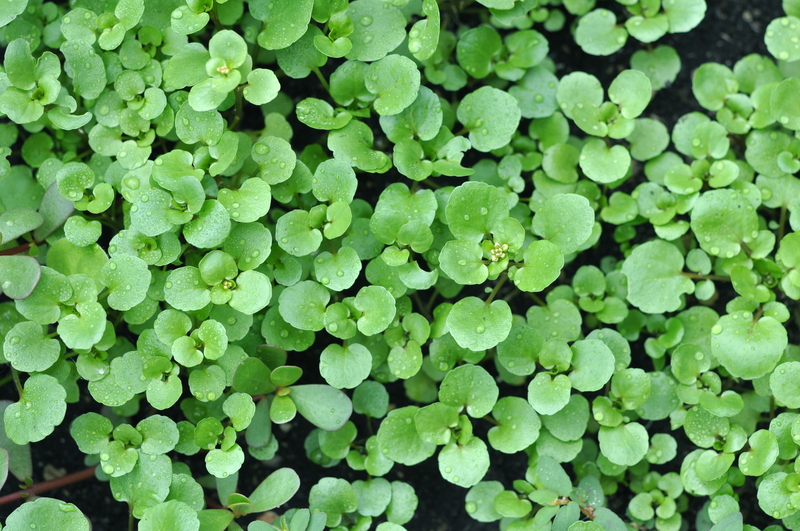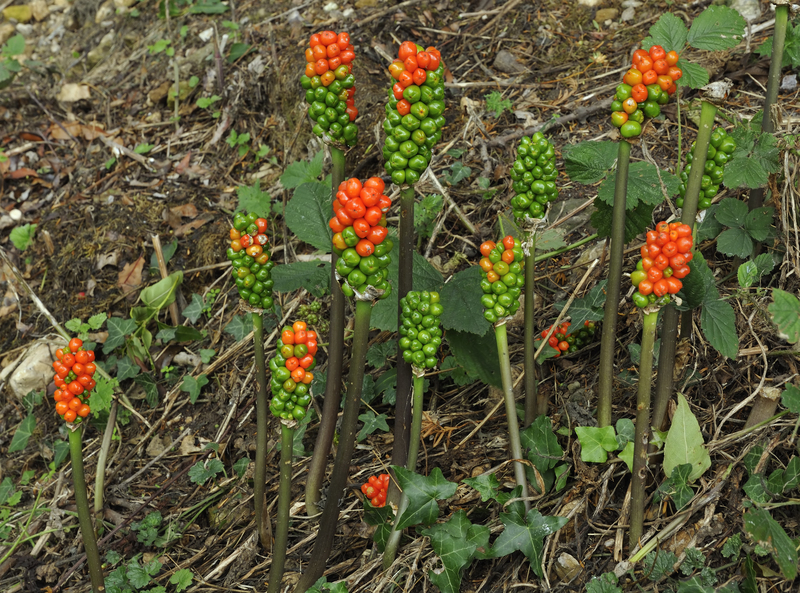Explore the Science and Art of Orchid Care
Posted on 19/05/2025
Explore the Science and Art of Orchid Care
Orchids have long captivated gardeners and plant lovers with their stunning diversity, enchanting blooms, and unique growing requirements. Delving into the science and art of orchid care reveals a world filled with beauty, fascination, and rewarding challenges. Whether you're a novice or a seasoned grower, mastering the blend of scientific understanding and artful nurturing can lead to thriving, blooming orchids year-round. In this comprehensive guide, we'll explore the multifaceted aspects of orchid cultivation, from species selection to expert care tips--helping you transform your home into a miniature jungle of living gems.

The Enchanting World of Orchids: An Overview
Orchids are far more than just decorative plants; they comprise one of the largest and most diverse plant families on the planet, with over 25,000 naturally occurring species and more than 100,000 hybrids. Their remarkable adaptability means orchids are found on every continent except Antarctica, thriving in environments ranging from tropical rainforests to alpine meadows.
- Orchidaceae Family: The second largest family of flowering plants.
- Habitats: Epiphytic (on trees), lithophytic (on rocks), and terrestrial (in soil).
- Fascinating forms: From the flamboyant Cattleya to the delicate Phalaenopsis and unusual Bulbophyllum.
Orchid care is a blend of science-backed horticultural principles and the subtle art of interpreting each plant's needs--making it a truly unique gardening discipline.
The Biology Behind Orchid Care
Understanding Orchid Structures
To excel at orchid growing, it helps to know what makes these plants distinctive. Some anatomical features include:
- Pseudobulbs: Swollen stems storing water and nutrients (common in Cattleya and Dendrobium).
- Roots: Many are covered with velamen, a spongy tissue that absorbs moisture and nutrients from the air--crucial for epiphytic orchids.
- Leaves: Adapted to conserve water in dry spells or channel rain in humid jungles.
- Flowers: Renowned for their bilateral symmetry and an intricate lip called the "labellum," specialized for pollinator attraction.
The Orchid Life Cycle: Growth and Rest
Most orchids have distinct growth cycles:
- Active Growth: New shoots, leaves, and roots form. Orchids need warmth, light, and regular feeding.
- Flowering: Buds develop and bloom, often triggered by seasonal changes in temperature or light.
- Dormancy: Many orchids rest after flowering, slowing down growth to conserve energy. Watering and fertilizing should be reduced during this phase.
Understanding these rhythms is vital for effective orchid care and knowing when to adjust your routine.
The Art and Science of Orchid Watering
How Much Water Do Orchids Need?
Watering is arguably the most crucial element of successful orchid care, and it's often misunderstood. The key is to balance moisture without oversaturating. Too much water leads to root rot, while too little causes dehydration.
- Observation is your best tool: Only water when roots turn silvery grey (not green), and the potting medium feels dry.
- Type matters: Phalaenopsis prefer to dry out between waterings, while Paphiopedilum like more consistent moisture.
- Water quality: Use rainwater, distilled, or filtered water to avoid mineral build-up.
Pro Tips for Watering Orchids
- Water early in the day to allow excess moisture to evaporate before nightfall.
- Use room-temperature water.
- Never let orchids sit in standing water.
Lighting for Orchids: Mimicking Nature
In nature, orchids grow under dappled sunlight, often protected by jungle canopies. Replicating these conditions indoors is key to success.
- Phalaenopsis: Best in bright, indirect light.
- Cattleya and Dendrobium: Prefer high light but not direct sun.
- Tip: A south- or east-facing window is ideal, but provide sheer curtains to prevent burning.
Leaves give clues: Dark green leaves signal insufficient light; yellow spots or bleached leaves indicate too much.
Air Circulation and Humidity: Keys to Healthy Orchids
The art of orchid care includes making your indoor environment "breathe" like a tropical jungle:
- Maintain humidity between 40-70%. Use a humidity tray, group plants, or a room humidifier.
- Good airflow is essential to prevent fungal diseases. A small oscillating fan is often beneficial.
Tip: Misting can raise humidity, but avoid direct mist on blooms to prevent spotting.
Orchid Potting and Media: Science-Driven Choices
Choosing the Right Potting Mix
Unlike regular houseplants, most orchids require specialized potting mixes because they are epiphytes or lithophytes. Standard soils retain too much moisture and suffocate roots.
- Bark chips: The gold standard for epiphytic orchids.
- Sphagnum moss: Retains more moisture, ideal for thin-rooted types and seedlings.
- Charcoal and perlite: Improve drainage and keep the medium fresh.
Tailor your mix to your orchid species and your home's humidity levels.
Repotting Orchids: When and How
- Repot every 1-2 years, when the medium breaks down or roots outgrow the container.
- Pick a pot with ample drainage holes.
- Gently remove old medium, trim dead roots, and reposition the plant in fresh mix.
Fertilizing Orchids: Feeding for Flourishing Flowers
Orchids need nutrients, but less than many other houseplants. The science of orchid nutrition says "feed weakly, weekly."
- Use a balanced, water-soluble orchid fertilizer (20-20-20 or similar), or special orchid blends.
- Dilute fertilizer to one-quarter strength and apply during active growth/flowering.
- Flush pots with plain water monthly to prevent salt buildup.
Reduce feeding during the plant's dormant phase. Too much fertilizer can burn roots and inhibit blooming.
Common Orchid Problems and Science-Based Solutions
Pests and Diseases
- Mealybugs, scale, spider mites: Treat with insecticidal soap or neem oil. Remove by hand with alcohol swabs.
- Root rot: Usually from overwatering or poorly draining mix--allow roots to dry, repot in fresh medium, and trim damaged roots.
- Leaf spots: Fungal or bacterial infections; remove affected leaves, improve air circulation, and treat with fungicide if needed.
Blooming Challenges
- No blooms? Insufficient light, not enough or too much feeding, improper temperature swings, or skipping dormancy may be the cause. Adjust care accordingly.
- Buds dropping? Sudden environmental changes or drafts are often the culprit.
The Art of Displaying and Enjoying Orchids
While scientific know-how forms the backbone of orchid cultivation, the art of orchid care shines in how you showcase them:
- Creative containers: Try glass vases, hanging mounts, or rustic bark slabs for a natural look.
- Orchid arrangements: Combine different species for varied colors and shapes.
- Home decor: Orchids thrive in bathrooms, kitchens, and living rooms with good light and humidity.
Tip: Rotate your orchids to ensure even growth, and enjoy their blooms where you spend the most time.
Popular Orchid Varieties for Every Grower
- Phalaenopsis (Moth Orchid): Easiest for beginners, blooms last months.
- Cattleya: Fragrant, flamboyant flowers, requires bright light.
- Dendrobium: Versatile in form and ease, needs good air circulation.
- Oncidium: "Dancing Ladies," likes high humidity and indirect sun.
- Vanda: Spectacular roots and blooms, best for advanced growers with bright light needs.

Frequently Asked Questions About Orchid Care
How often should I water my orchid?
There's no set schedule--water when roots or medium dry out. Most home-grown orchids need water every 7-10 days.
Why are my orchid leaves turning yellow?
Yellowing may indicate overwatering, insufficient light, or natural aging of old leaves. Assess your conditions and make adjustments.
How do I get my orchid to bloom again?
To rebloom, provide adequate light, balanced feeding, and mimic natural seasonal changes--like a night-time temperature drop of 10?C (about 50?F) for several weeks.
Should I cut the old flower spike?
For Phalaenopsis, you can trim above a node to encourage secondary spikes. For others, cut at the base after blooming.
The Joy and Rewards of Caring for Orchids
Orchid growing is a deeply satisfying pursuit that rewards both the methodical and the creative gardener. The science of orchid care gives you the tools for success, while the artistry involved makes each plant a personal project. With patience, curiosity, and attention to detail, anyone can transform their home with gorgeous, blooming orchids that not only beautify your space but also connect you with one of the most fascinating families in the plant kingdom.
Embrace the science and art of orchid care--and watch your own living masterpiece flourish!



